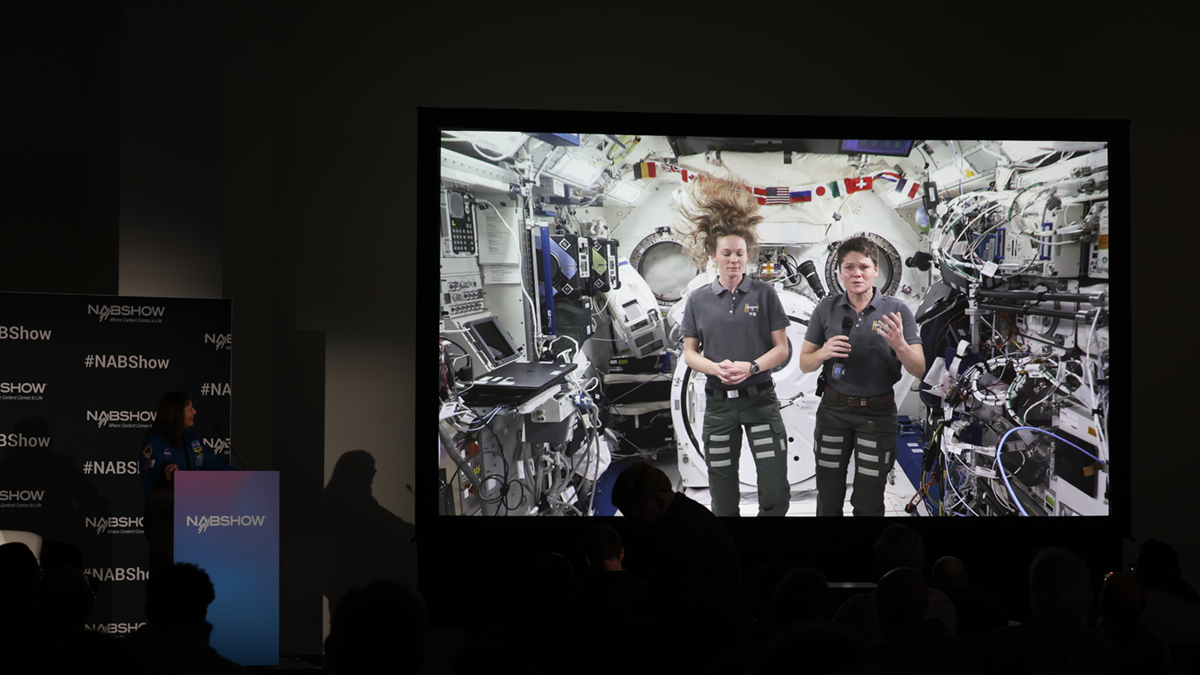Canadian Broadcasting deploys first site-specific digital signage feed at Ottawa Airport

Thomson, Avid Technology, Pinnacle Systems and Quantel have announced their support for Panasonic's P2 solid-state memory-based acquisition system. The companies plan to offer interoperability between their products and the P2 card. Click here to view an enlarged diagram.
Canadian Broadcasting Corporation (CBC) ventured into its first digital signage project this fall when it launched CBC News Express at the Ottawa International Airport in Ontario, Canada. The video and data news feed brings 18 hours of venue-specific, regularly updated content to travelers via a large flat screen in the arrivals area of the airport.
“Our long-term goal – with the CBC News Express unit – is to be able to package content in different manners for different locations to get CBC content out to as many viewers as possible,” said Atkinson, executive director of business development, CBC. “This is our first, real streaming video [digital signage] project in Canada.”
CBC partnered with the Ottawa International Airport Authority to bring its specialized content to one of two of the airport’s large, side-by-side, Panasonic flat screens. The screens span 12 feet in length and rise nine feet in height. CBC launched its service in Ottawa in late October 2003.
Through the use of technology from Montreal-based VertigoXmedia, CBC pushes video and data content from its Toronto location to the independent playout system at Ottawa International Airport. The content – broadcast-quality video transferred as MPEG-2 files over the CBC’s wide-area network – is edited specifically for the Ottawa site. A Canadian news network, CBC provides a combination of French and English video and data programming to the venue. Data crawls are provided in real-time, and video content is updated between two and six times per day, depending on the content’s genre (news, finance, sports, etc.), Atkinson says.
“We’ve set up a group within the CBC to produce content that would go into specific venues. They package CBC news, sports, and current affairs programming, as well as data crawls [covering] weather, business, and entertainment news,” Atkinson explains. “So we’re able to leverage the content that the CBC has from its different platforms, and using software and hardware from Vertigo, deliver it fully packaged to the airport.”
Atkinson notes that the project has gone smoothly to date, with minor challenges originating from coordination of several partnerships – content, location, technology. “When you get more involved in the deal, you have to make sure all the objectives of multiple parties come together. That’s not been a huge deal; it’s just something to factor into the equation.”
Get the TV Tech Newsletter
The professional video industry's #1 source for news, trends and product and tech information. Sign up below.
To ensure high-quality, site-appropriate content, CBC formed a specialized team of media professionals. The team comprises a high-quality producer to ensure CBC gets the content with the right feel. “We have to make sure we’re doing stories that are appropriate, so there’s a lot of editorial work being done,” Atkinson said. “We try to pick the high-impact, highest quality content that is more relevant to travelers.”
So far, CBC is pleased with the feedback. “We have had a tremendous response from the Ottawa airport project. People like the quality of the content and that it is timely,” Atkinson says. “We have a feature that would allow us, if there are breaking stories, to go live” – for instance, when the Pope came to Canada.
Restrictions levied on live feeds come in the form of substantial budget requirements and site-based content restrictions. For example, Atkinson notes CBC would not bring live feeds of aviation accidents to Ottawa International Airport.
And while it hasn’t chosen to use this option yet, the airport can use one of the crawl lines on the CBC flat screen for specific airport information, which can be uploaded easily by the airport via the Internet.
The CBC-fed flat screen is displayed side-by-side with a twin screen providing static advertising for local hotels. Two types of advertising are offered on the CBC screen – commercials and tags in crawl lines. Managed through the airport authority and a company called Interspace, Ottawa advertising comes to CBC through these third parties, Atkinson says. “They procure the advertising and send it to CBC. The commercials have to meet CBC standards, and then we package them within the playlist [feature] that Vertigo provides.”
The Vertigo ProducerXmedia suite is used to deploy and manage programming for the Ottawa project. CBC leverages various products within the suite including: Xmedia Server, an asset management system; Xstudio, a creative authoring tool; Xbuilder, the content scheduling and overall editorial controller; and VertigoCG, serving as the airport’s playout station that connects into the flat screen and can output data in different formats.
From CBC’s perspective, Atkinson said, the Ottawa project gives the network another opportunity to reach and grow its audience using new television platforms. “Airports are a great venue. We have other partners working with us on other airports, and we’re looking at providing content on video boards through a partnership with ClearChannel in Toronto,” he said. “Content is what drives the business aspects of the deal.”
